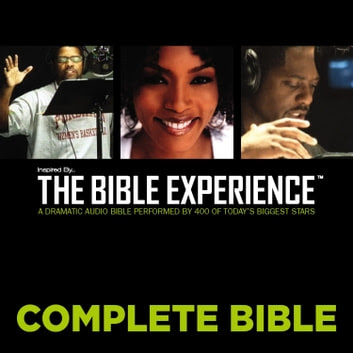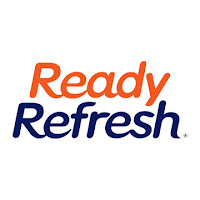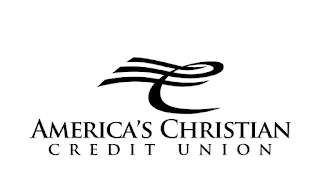LESSONS 1–65
PAUL D. WEGNER
Dedicated to my Hebrew Students, at the following schools, who for over thirty years have kindly listened to my teaching:
Trinity Evangelical Divinity School
Moody Bible Institute
Phoenix Seminary
Golden Gate Baptist Seminary
Gateway Seminary
Lesson 3 Quiescent and Guttural Letters
Lesson 4 Hebrew Syllables and Accents
Lesson 5 Simple and Compound Shewas
Lesson 6 Maqqēph and Dāghēshes
Lesson 8 Vowel Reduction Rules
Lesson 13 Absolute and Construct Nouns
Lesson 14 Verbs: General Introduction and Qal Perfects
Excursus: Using a Hebrew Lexicon
Lesson 15 Interrogative Pronouns
Lesson 16 The Definite Direct Object Marker
Lesson 17 Imperfect Verb Forms
Lesson 18 Imperative Verb Forms
Lesson 19 Jussive and Cohortative Verb Forms
Lesson 21 Personal Suffixes on Masculine Singular Nouns
Lesson 22 Personal Suffixes on Inseparable Prepositions
Lesson 23 Pronominal Suffixes on Feminine Singular Nouns
Lesson 24 Pronominal Suffixes on Plural Nouns
Lesson 25 Active Participle Verb Forms
Lesson 26 Passive Participle Verb Forms
Lesson 29 Demonstrative Adjectives
Lesson 30 Infinitive Verb Forms
Lesson 31 Word Order in Verbal Sentences
Lesson 35 Quadri-Radical Hebrew Roots
Lesson 38 Forms of Negative Commands
Lesson 41 Degrees of Comparison
Excursus 2: Using a Hebrew Concordance
Lesson 47 Verbal Suffixes (Perfect Forms)
Lesson 48 Verbal Suffixes (Imperfect Forms)
Lesson 49 Verbal Suffixes (Imperative Forms)
Lesson 50 Verbal Suffixes (Participle Forms)
Lesson 51 Verbal Suffixes (Infinitive Forms)
Lesson 52 Verbal Suffixes (Piel and Hiphil Forms)
Lesson 53 Word Order in Non-Verbal Sentences
Lesson 58 Two Common Exceptions
Lesson 60 I—Yodh and I—Waw Verbs
SUPPLEMENT I: Hebrew Verb Charts
II. Qal Perfect Forms with Suffixes
III. Qal Imperfect Forms with Suffixes
IV. Qal Imperative Forms with Suffixes
V. Qal Participle Forms with Suffixes
VI. Qal Infinitive Construct Forms with Suffixes
VII. Piel Perfect Forms with Suffixes
VIII. Piel Imperfect Forms with Suffixes
IX. Hiphil Perfect Forms with Suffixes
X. Hiphil Imperfect Forms with Suffixes
XXVII. Geminate Verbs (Active)
XXVIII. Geminate Verbs (Passive)
XXIX. Doubly Weak Verbs (I—Nun and III Guttural Verbs)
XXX. Doubly Weak Verbs (I—Nun and III Aleph Verbs)
XXXI. Doubly Weak Verbs (I—Guttural and III Aleph Verbs)
XXXII. Doubly Weak Verbs (I—Nun and III He Verbs)
XXXIII. Doubly Weak Verbs (I—Guttural and III He Verbs)
XXXIV. Doubly Weak Verbs (I—Aleph and III He Verbs)
XXXV. Doubly Weak Verbs (I—Waw and III Guttural Verbs)
XXXVI. Doubly Weak Verbs (I—Waw and III Aleph Verbs)
XXXVII. Doubly Weak Verbs (II—Waw and III Aleph Verbs)
XXXVIII. Doubly Weak Verbs (I—Waw and III He Verbs)
XXXIX. Irregular Weak Verbs (הלך)
XL. Irregular Weak Verbs (יטב)
XLI. Irregular Weak Verbs (שׁתה)
XLII. Irregular Weak Verbs (יכל)
ABD Anchor Bible Dictionary. Edited by David N. Freedman. 6 vols. New York, 1992.
AV Authorized Version
BDAG Walter Bauer, William F. Arndt, F. Wilber Gingrich and Frederick W. Danker. A Greek-English Lexicon of the New Testament and Other Early Christian Literature. 3rd ed. Chicago, 2000.
BDB Francis Brown, S. R. Driver, and Charles A. Briggs. A Hebrew and English Lexicon of the Old Testament. Oxford, 1907.
BHK Biblia Hebraica. Edited by Rudolf Kittel. Stuttgart, 1905/1906, 19252, 19373, 19514, 197316.
BHS Biblia Hebraica Stuttgartensia. Edited by Karl Elliger and Willhem Rudolph. Stuttgart, 1984.
GNT The Greek New Testament. Edited by Barbara Aland, Kurt Aland, Johannes Karavidopoulos, Carlo M. Martini, and Bruce M. Metzger. 4th ed. Stuttgart, 2001.
ISBE The International Standard Bible Encyclopedia. Edited by Geoffrey W. Bromiley et al. Rev. ed. 4 vols. Grand Rapids, 1979–1988.
JB Jerusalem Bible
KB Ludwig Koehler and Walter Baumgartner. Lexicon in Veteris Testamenti libros. 5 vols. Leiden, 1953.
KJV King James Version
LB Living Bible
LXX Septuagint
NASB New American Standard Bible
NEB New English Bible
NIDOTTE The New International Dictionary of Old Testament Theology and Exegesis. Edited by Willem VanGemeren. 5 vols. Grand Rapids, 1997.
NIV New International Version
NLB New Living Bible
NRSV New Revised Standard Version
RSV Revised Standard Version
TEV Today’s English Version
Afformative: A letter or combination of letters attached to the end of the main stem of a word.
Anaptyxis: An additional (“helping”) vowel inserted between consonants to facilitate pronunciation.
Antecedent: The word or phrase to which a relative pronoun refers.
Aphaeresis: Absence or loss of a letter.
ʾĀthnāḥ: An accent used to indicate the principle division within a verse (֑).
Begadkepat letter: A mnemonic device indicating which Hebrew letters may be pronounced as either a stop or a spirant.
Compensatory lengthening: A vowel that is lengthened to compensate for a consonant that cannot take a dāghēsh.
Dāghēsh forte: A dot placed in a consonant to indicate that it is doubled.
Dāghēsh lene: A dot placed in a consonant to indicate that it is to be pronounced as a “stop” and not a “fricative.”
Defective writing: A Hebrew word that is written without Matres Lectionis. See Matres Lectionis.
Doubling: Two consonants occurring consecutively in a word, with no intervening vowel.
Furtive pathaḥ: A pathaḥ added before a final guttural to help in pronunciation.
Gemination: Same as doubling.
Guttural letters: Hebrew consonants that are pronounced in the back of the throat.
Implicit doubling: Strong guttural letters (ח and ע) that double implicitly (or within themselves) and thus do not require compensatory lengthening.
Inflection: The change in the form of a word to indicate number, gender, person, etc. Intransitive verb: A verb that does not take a direct object.
Kethîb: A word or phrase in the Masoretic Text that is thought to be a possible corruption.
Labials: Letters that are pronounced by placing the tongue against the back of the teeth.
Mappîq: A dot (or dāghēsh) placed in the final hē of a word to indicate that it is to be sounded.
Maqqēph: A horizontal line placed at the top of a line between two words to indicate that they are joined together.
Masoretes: Jewish scholars (dated to approximately 500–1000 A.D.) who copied biblical texts and added vowel points and accent marks to the consonantal texts.
Metathesis: Transposition of letters within a word.
Methegh: A small vertical line placed alongside a vowel to indicate that the vowel is not to be reduced.
Pause: A syllable that has a major accent (e.g., Sillûq or ʾĀthnāḥ) is said to be “in pause.”
Penultima: The second to the last syllable in a word.
Plene writing: ([lit.] “full writing”) A word in which matres lectionis are written.
Predicate: A word or phrase that states something about the subject.
Preformative: A letter or combination of letters that is attached to the beginning of the main stem of a word.
Preterite: Simple past tense.
Pretonic: The second to last syllable of a word.
Propretonic: The third to last syllable of a word.
Proto-Hebrew: Hypothetical early stage of Hebrew writing.
Qērê: A marginal note indicating a correction to the Masoretic Text.
Qērê perpetuum: A word that always requires correction even though marginal notes only sometimes call attention to it.
Quiescent letters: Letters that lose their consonantal quality.
Shewa: A placeholder in a Hebrew word written in the case of an absent vowel.
Silent shewa: A shewa that has no sound.
Sillûq: A small line written next to the vowel in the final accented syllable of a word to indicate the end of a sentence.
Spirant: A consonant whose pronunciation is characterized by continuous friction (e.g., s, z in English; ז, ס, צ, שׂ, שׁ in Hebrew).
Stative verb: A verb that describes a state of being rather than an action (e.g., “be great,” “be good”).
Stop: A consonant whose pronunciation causes a temporary closing of the breathing passage.
Syncopation: The shortening of a word by dropping an original vowel or syllable.
Tone syllable: The major accented syllable of a word; it is sometimes called the “stressed” syllable.
Transitive verb: A verb that takes a direct object.
Ultima: Same as the tone syllable.
Unvoiced: Used to describe consonants whose pronunciation requires no exertion of the vocal chords.
Virtual doubling: Same as implicit doubling.
Vocal shewa: A shewa that is the only vocalization in a syllable and therefore has to carry some sound.
Voiced: Used to describe consonants whose pronunciation causes the vocal chords to vibrate.
Summary of F. X. Braun, English Grammar for Language Students (Ann Arbor, MI: Ulrich’s Books, 1947). For further disscussion of these topics see the book.
1. Subject: the word or group of words about which something is said or asserted. E.g., Hebrew class is fun.
2. Predicate: that which is said or asserted about the subject. E.g., Hebrew class is fun.
3. Noun: a word used as a name of a person, place, or thing. There are proper nouns and common nouns. E.g., Proper nouns: Charles, John; Common nouns: book, class.
4. Pronoun: a word used in place of a noun (pronoun means “for the noun”). E.g., he, she, it.
Types of Pronouns:
a. Demonstrative Pronoun: a pronoun that points out the particular person or thing referred to. E.g., this, that, these.
b. Intensive pronoun: a pronoun which serves to intensify or emphasize its antecedent. E.g., myself, himself, herself.
c. Interrogative pronoun: a pronoun used in asking a question. E.g., who, whose, which.
d. Personal pronoun: a pronoun that shows by its form whether it stands for the person(s) speaking (first person, e.g., I, me), the person(s) spoken to (second person, e.g., you), or the person(s) or thing(s) spoken about (third person, e.g., he, they).
e. Possessive pronoun: a pronoun which indicates ownership. E.g., my, mine, hers, its.
f. Reciprocal pronoun: a pronoun which denotes interchange of the action indicated by the verb. E.g., each other, one another.
g. Reflexive pronoun: a pronoun/object which refers to the subject of their respective verbs. E.g., myself, yourself, himself.
h. Relative pronoun: a pronoun which serves to relate the various clauses of a sentence to one another. E.g., who, whose, to whom.
5. Verb: a word used to tell or assert something about some person, place, or thing. E.g., rode, was.
6. Adjective: a word used to modify (describe, limit, or qualify) the meaning of a noun or pronoun. E.g., beautiful, kind, that.
7. Adverb: a word used to modify (describe, limit, or qualify) the meaning of a verb, adjective, or other adverb. E.g., swiftly, very, immediately. There are four classes:
a. Time: then, now, frequently
b. Place: here, there, somewhere
c. Manner: swiftly, quietly, poorly
d. Degree: very, rather, extremely
8. Conjunction: a word used to connect words, phrases, or clauses. There are two basic kinds:
a. Coordinating conjunction: (and, but, or not) connecting words, phrases, or clauses of equal rank.
b. Subordinating conjunction: (although, because, if, since, that, etc.) introduces clause which is subordinate to the rest of the sentence.
9. Definite Article: the
10. Preposition: a word used with a noun or pronoun to show its relation to some other word or words in the sentence. E.g., in, by, at, etc.
11. Direct Object: the person or thing directly affected by the action of the verb. E.g., I hit the ball.
12. Indirect Object: the person or thing indirectly affected by the action of the verb. E.g., He hit the ball to me.
13. Predicate Nominative: a noun that completes the predicate and explains the subject. It is in the same case as the subject. E.g., Lincoln became president. He remains a bachelor.
14. Transitive verb: a verb which takes a direct object. E.g., I hit the ball.
15. Intransitive verb: a verb which cannot take an object. E.g., A tree grows. He is big.
16. Stative verb: a verb which expresses a state of being, not an action. E.g., He is tired.
17. Participle: a verb form used as an adjective (combination of a noun and a verb)
a. Present participle: expresses incomplete or continuing action. E.g., He was studying his lesson.
b. Past participle: expresses completed action. E.g., I have used the pen for a week.
18. Infinitive: an infinitive denotes action not limited by person, time, or place. E.g., “to go”
19. Clause: consists of a subject and a predicate. It may be all or only part of a sentence. There are two kinds of clauses:
a. The main clause: a clause which can make sense on its own. E.g., He received his pay.
b. The subordinate clause: a clause subordinate to the main clause and does not make sense on its own. E.g., He will receive his pay when he does his work.
20. Cases: a term which classifies the relationship of nouns and pronouns to other elements of a sentence.
a. Nominative case: a noun or pronoun used as the subject of a sentence. E.g., He hit the ball.
b. Accusative case: a noun or pronoun used as the direct object of a transitive verb. E.g., He hit the ball.
c. Genitive case: a noun or pronoun which denotes possession, origin, or separation. E.g., He hit my ball.
d. Dative case: a noun or pronoun uses as the indirect object of a transitive verb. E.g., He hit the ball to me.
21. Voice: the form of the action of the verb. a. Active: E.g., I hit the ball. The subject does the action. b. Passive: E.g., The ball was hit. The subject is acted upon.
22. Reflexive verb: a verb whose action is turned back upon itself. E.g., I wash myself.
23. Factative verb: a verb which states something to be a fact. E.g., I am clean.
24. Denominative: a noun which has been made into a verb. E.g., trek --- trekking
25. Suffix: an element added to the end of a word. E.g., facts
26. Prefix: an element added to the beginning of a word. E.g., involuntary
27. Sufformative: a suffix which is part of the conjugation of a verb or the declension of a noun. E.g., walked
28. Preformative: a prefix which is part of the conjugation of a verb or the declension of a noun. E.g., יִכְתֹּב (Hebrew example since English does not use preformatives) “he will write”
29. Mood: the manner in which an assertion is made.
a. Indicative: a declarative statement or question. E.g., I walked home.
b. Imperative: a command or request. E.g., Please walk home.
First person: cohortative mood. E.g., Let me walk home.
Second person: Imperative mood. E.g., Please walk home.
Third person: Jussive mood. E.g., Oh that I would walk home.
c. Subjunctive: a hypothetical or imaginative. E.g., If you could would you walk home.
Alphabet
In this stage a letter equals a sound so that words are formed by placing together certain sounds.1 The word “alphabet” comes from the first two letters of the Greek alphabet, alpha (ἄλφα) and bēta (βητα) which represent the Phoenician and Hebrew words ʾāleph and bēth, the first two letters of their alphabet. The alphabet revolutionized communication with its ability to reduce a language to between twenty and thirty signs—something which we take for granted today. But some modern languages, such as Chinese and Japanese, have retained numerous symbols and their accompanying encumbrances, as described by Professor Joseph Naveh of the Hebrew University, Jerusalem:
In 1946, in Japan, an attempt was made to reduce the number of writing symbols to 1850, of which 881 were to be taught in elementary schools. These numbers sound incredible to the Western mind, since English-speaking peoples are able to represent their language in 26 letters.2
It is uncertain which script was the first to have an alphabetic script, but there are several possibilities:
Proto-Sinaitic (Canaanite): Several inscriptions commonly classified as graffiti, discovered in 1905 at Serbit el-Khadim in the Sinai Peninsula less that fifty miles from the traditional site of Mt. Sinai, appear to be derived from an alphabet. They were initially dated by Sir Alan Gardiner, a pioneer in the deciphering of these inscriptions, to the period of the Twelfth Egyptian Dynasty (c. 1989–1776 bce; see fig. 1).
Fig. 1: Several examples of the graffiti discovered in 1905 at Serbit el-Khadim in the Sinai Peninsula (Wikipedia Commons in Public Domain in United States).
Some inscriptions from Byblos (or ancient Gebal) dated to the Middle Bronze Age (about 1800–1400 bce) may exhibit an early form of alphabetic script (fig. 2). This town, located on the shores of the Mediterranean Sea, was known for its commercial activity as an important link between the East and West. These inscriptions are written in a pseudo-hieroglyphic script that has yet to be translated.
Fig. 2: An inscription from Byblos on a bronze plaque dated to about 1800–1400 bce, possibly in an early alphabetic script. (Wikipedia Commons, Creative Commons License 4)
Inscribed objects in Palestine:
1) A potsherd bearing three letters of a Sinaitic-type script dating between 1800–1650 bce was found at Gezer (Tell-el-Jazari). 2) A plaque from Shechem (modern day Nablus) bears eight signs on the front and three on the back, dated to about the same period as the potsherd above. 3) A bronze dagger (fig. 3) from a tomb at Lachish (Tell-ed-Duweir) is inscribed with four signs on the side of the blade and dates to about 1770–1550 bce. All of these objects are early, undeciphered evidence of alphabetic script.
Fig. 3: a dagger from Lachish. (Wikipedia Commons, Creative Commons License 4)
Archeological evidence to date points to the origin of the alphabet as either Canannite or Phoenician from the first half of the second millennium bce. The Phoenicians had twenty-two letters which became the basis for subsequent alphabets3—Hebrew, Greek, and most other modern languages are based upon this stage in the development of writing.
Hebrew
Language, by nature, expresses a way of thinking in the wording of concepts and ideas and thus provides insights into culture. These three languages are not dead as sometimes thought, but are still used among some people groups today. Hebrew has been the national language of Israel since 1948. Aramaic dialects are spoken by several small groups: certain inhabitants of villages in the Anti-Lebanon area; Christians or Jews from or near Azerbaijan and Kurdistan; and remnants of the gnostic sect of the Mandaeans.4 Greek is spoken by over ten million Greeks and Cypriots.5 These languages have changed and developed over the centuries, but the modern speaker would recognize much of their ancient counterparts and there would be fewer differences between them than the English spoken today as compared to that spoken in the eleventh century ce.6
The majority of the Old Testament was written in what is commonly known as Classical Hebrew or Biblical Hebrew, as distinct from later forms of this language, such as Rabbinic Hebrew, Medieval Hebrew, and Modern Hebrew (Ivrit). It is difficult to know just how long Classical Hebrew was a spoken language for the earliest extant texts come from about the eleventh (Izbet Sartah Abecedary)7 [fig. 4] or tenth centuries B.C.E. (Gezer Calendar) [fig. 5] and the latest known texts are letters found in the Murrabaʿat Caves dated to about 132–135 CE; however, these texts probably do not indicate the complete range of its usage.8
Fig. 4: Drawing of the Izbet Sartah Abecedary (alphabet), comprised of two interlocking clay sherds, were found in 1974 (or 1967) at the excavation at Izbet Sartah, a village in the vicinity of Aphek. These two ostraca preserve the oldest paleo- (old) Hebrew alphabet yet discovered. The first four lines appear to be random letters, but the fifth is clearly the alphabet written from left to right and dated to the twelfth century bce.
Translation:
His two months are (olive) harvest,
His two months are planting (grain),
His two months are late planting;
His month is hoeing up of flax,
His month is harvest of barley,
His month is harvest and feasting;
His two months are vine-tending,
His month is summer fruit.
(Translation from W. F. Albright in ANET, 320.)
Fig. 5: The Gezer Calendar, from about the tenth century bce, was discovered by an Irish archeologist, R. A. S. Macalister, during the excavation at Gezer in 1908 (Wikipedia Commons [Osama SM Amin FRCP Glasg]).
Hebrew experienced fairly wide usage—during the eight century bce, Isaiah calls it the language of Canaan (19:18) and even older documents written in the Phoenician language are very similar (e.g., the inscription on the sacrophagus of King Ahiram of Byblos; the inscriptions found at Kuntillet Ajrud in Sinai).
During the biblical period two different scripts were used for Hebrew, the earlier called paleo-Hebrew (or old Hebrew) and the latter Square script (or Assyrian script after its origin, see chart 1). The earliest recorded examples of Square script appear in the Araq el-Emir inscription found in East Jordan from the fourth or third century bce9 and in the earliest Qumran fragments (4QSamb and 4QJera) from about 250 bce.10 Sometime after their return from the Babylonian Exile (538 bce) the Jews gradually adopted the Aramaic language and Square script.11
Chart 1: Paleo-Hebrew and Square Scripts It is interesting to note that even after this change took place some later texts revert back to paleo-Hebrew forms (e.g., Habakkuk Commentary [the name Yahweh is in paleo-Hebrew script; see fig. 6]; Bar Kochba’s revolt coins [132–135 ce]; see fig. 7).
Fig. 6: A page from the Habakkuk Commentary from Qumran is written in Square script but some places in the manuscript the divine name Yahweh appears in paleo-Hebrew script. According to Wikipedia Commons this picture is in Public Domain.
Fig. 7: A coin from the Bar Kochba Revolt. Followers of the Bar Kochba revolt may have used the paleo-Hebrew script to indicate that they were the legitimate continuation of the Jewish fathers as opposed to those employing Assyrian script. Published under the GNU Free Documentation License from Wikipedia Common license agreement.
The Hebrew alphabet has twenty-two letters, the order of which is found in several alphabetic acrostics in the book of Psalms (Pss. 9–10; 25; 34; 37; 111; 112; 119; 145). Psalm 119 is the most well-known alphabetic acrostic psalm—the first eight verses each begin with the Hebrew letter) א ʾāleph, then each of the second eight verses begin with the second Hebrew letter ב bēth, and so forth through the rest of the alphabet. The total number of verses in this Psalm is 22 × 8 = 176.
Originally the Old Testament was not written with vowel points because they were so familiar with the language, but as the Jews began to rely on Aramaic as their spoken language, Hebrew became more and more neglected. During the Babylonian Exile the conversion from Hebrew to Aramaic as the common language rapidly accelerated, so much so that Nehemiah was incensed to find that few could speak or read Hebrew after their return from the Exile (Neh. 13:24). For a long time it was considered the sacred language, however, and was kept alive by the Rabbis. Eventually the Masoretes, scribes who helped retain the Hebrew text from about 500–1000 ce, added vowel points to the text between the fifth to the eighth centuries ce in order to aid in pronunciation. The following diagram indicates what the consonants and vowels look like:
Thomas Manson, former New Testament Professor at University of Manchester (1936–58), has suggested that Jesus usually spoke Aramaic, but may have used Hebrew for his more formal disputes with the Pharisees.12 Jesus was clearly aware that the Old Testament was written in Hebrew Square script when he said in Matthew 5:18, “I tell you the truth, until heaven and earth disappear, not one iota or one tittle will by any means disappear from the Law, until everything is accomplished” (modified from the NIV). The word “iota” is the Greek equivalent to the Hebrew letter yôḏ (י) which is the smallest Hebrew letter in Square script, but not in paleo-Hebrew script. The “tittle” is a small pen-stroke that is used to help distinguish some letters (e.g., ד dāleth and ר rēsh are only distinguished by the small tittle on the top right side corner of the dāleth) and is not the same in paleo-Hebrew.
Hebrew letters also signify numbers and at times may have been used as mnemonic devices to aid in remembering Scripture. For example, Matthew 1:1–17 makes it clear that Jesus was in the Davidic line and that there were fourteen generations from Abraham to David (vv. 2–6), from David to the deportation to Babylon (vv. 6–11), and from the Babylonian deportation to Jesus (vv. 12–17). When added up, the numbers of the name “David” equal fourteen.
דוד = David ד (= 4) + ו (= 6) + ד (= 4) = 14 |
Aramaic
The Aramaic language takes its name from the Arameans, or the people of Aram, who are mentioned in Old Akkadian writings from as early as the mid-third millennium bce.13 Aram covered much of the upper Mesopotamian region and Aramaic became the international trade language (or lingua franca) of much of the ancient Near East. One of the earliest extant Aramaic document comes from the early ninth century bce [see fig. 23];14 while Aramaic is still in use today, its peak was in the seventh and eighth centuries bce when the Assyrian Empire controlled much of the Ancient Near Eastern area. According to 2 Kgs. 18:17–37 (cf. Isa. 36:2–22), the more educated person in Israel was able to speak both Aramaic and Hebrew.
Five Old Testament passages are written in Aramaic (Gen. 31:47; Jer. 10:11; Dan. 2:4–7:28; Ezra 4:8–6:18; 7:12–26)15 and the name עֲרָמִית ʿărāmît which refers to the Aramaic language, occurs twice (Ezra 4:7; Dan. 2:4). One of the rabbinical writings has the following injunction concerning Aramaic: “Let not the Aramaic be lightly esteemed by thee, seeing that the Holy One (blessed be He!) has given honor to it in the Law, the Prophets, and the Writings” (T.P., Sotah vii.2). This refers to the three sections of the Old Testament—the Law, the Prophets, and the Writings—each of which has a passage written in Aramaic.16
Fig. 23: The Beth-David Inscription discovered at Tel Dan in 1994 is one of the oldest known Aramaic inscriptions. Licensed under the Creative Commons Attribution-Share Alike 4.0 International License.
When the Israelites were taken in captivity to Assyria and Babylon, they would have found it very convenient to learn Aramaic to communicate with their neighbors. The problem came when they went back to Israel and they found that a large number of children from the mixed marriages were no longer able to speak Hebrew (Neh. 13:24). Aramaic almost died out with the spread of Hellenism and the push to unify the Greek Empire under a common language.17 However, it was still spoken during Jesus’ time, for several of his statements are recorded in Aramaic (talitha kum “little girl arise” [Mk. 5:41]; ephphatha “be opened” [Mk. 7:34]; Eloi, Eloi, lama sabachthani “My God, My God why have you forsaken me?” [Mk. 15:34]). Several other common words derive from Aramaic (e.g., Abba “father” [Mk. 14:36]; Maranatha “Our Lord, come” [1 Cor. 16:22]; Gulgolta “Golgotha or the skull” [Mk. 15:22]). Of the four Gospels, Mark records the most Aramaisms.














































No comments:
Post a Comment